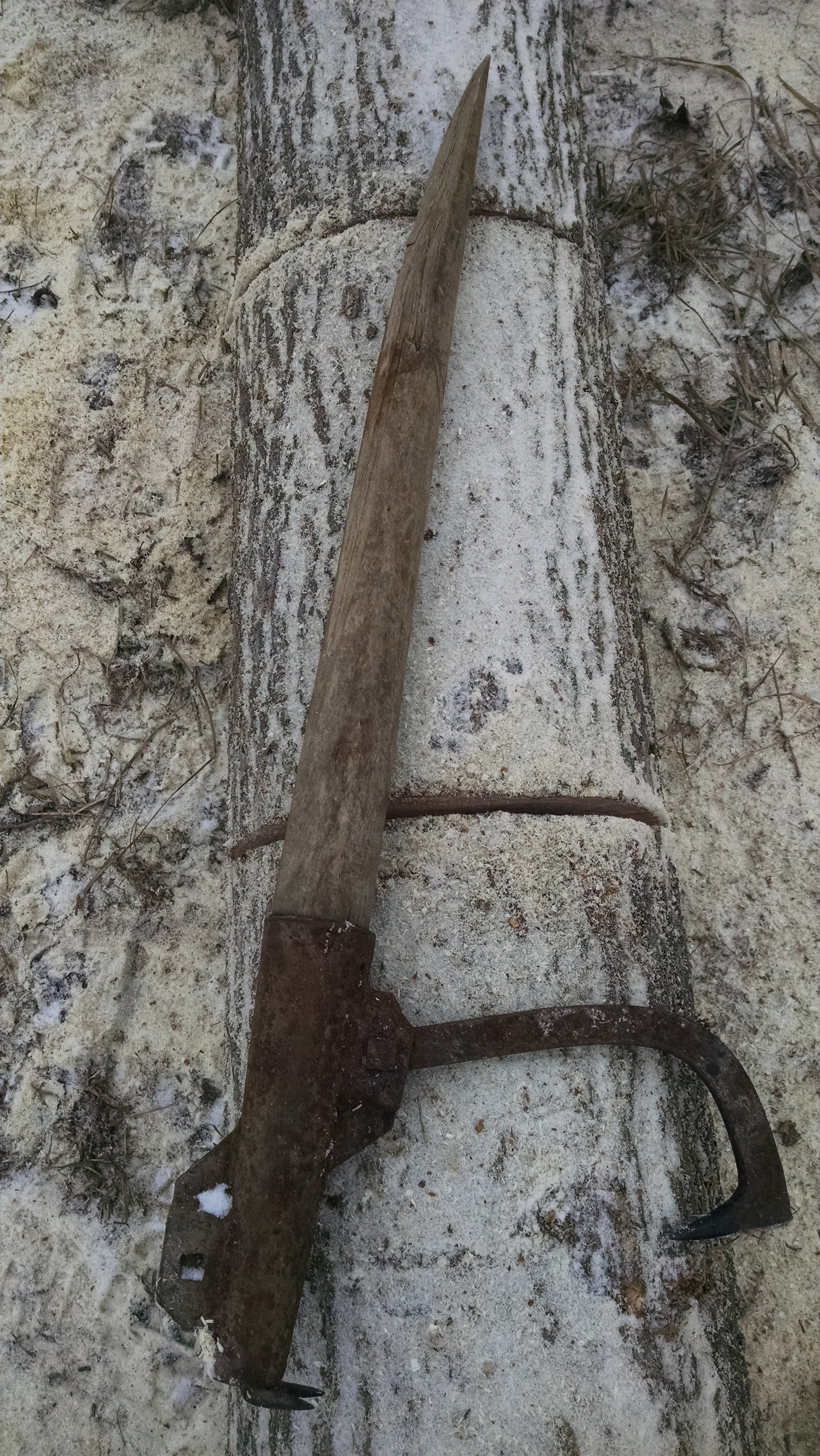There is a wonderful elegance in the simplicity, durability, and repairability of traditional hand tools. Take this cant hook for example. We found it in the back of a shed we were cleaning out. Since most production hardware for the last 50 years has used hex head bolts, the square heads indicate that it is probably more than fifty years old. It wouldn’t be a stretch for this to be quite a bit older, since the design of the cant hook and it’s close relative the peavey hasn’t changed much in 150 years. A little oil freed up the hinge and now the tool works as well as it ever has. The handle is broken, but there’s enough left to keep it functional. One of these days when we get a good hickory log we’ll need to cut a blank, dry it for a year, and then turn a new handle on a lathe. But there’s no rush to fix it.
Cant hooks are used to give leverage when rolling logs and timbers. The big hinged hook is called a dog. The terms “dog” and “dogging” have an ancient history in wood crafts, being used to describe a wide variety of hooks, clamps, and temporary fastenings. Our cant hook has a crows foot at the bottom – two sharpened spikes to dig into the log. Other hooks have a flat bottom with a slight flange, appropriately called a hog nose.
The ease with which we were able to bring this antique tool back to usefulness brings to mind an article in Popular Science when Mythbusters was a relatively new show. Jaime Hyneman said: “I want to weigh in on the concept of tolerance in design. There are times when precision is needed, like in a highly tuned racing engine. But there are also cases where the best engineering is loose. The world is sloppy, and if you need something to interact closely in a variety of situations, precision can be your enemy.”
Well said Jaime. Gracefully dealing with the sloppy world is a lesson we are forever learning and relearning. All our farming plans are surrounded by contingencies. The more our plans can flex to conform to the contours of unpredictable circumstance, the less likely we are to be standing around scratching our heads and wondering, “Now what?”.

